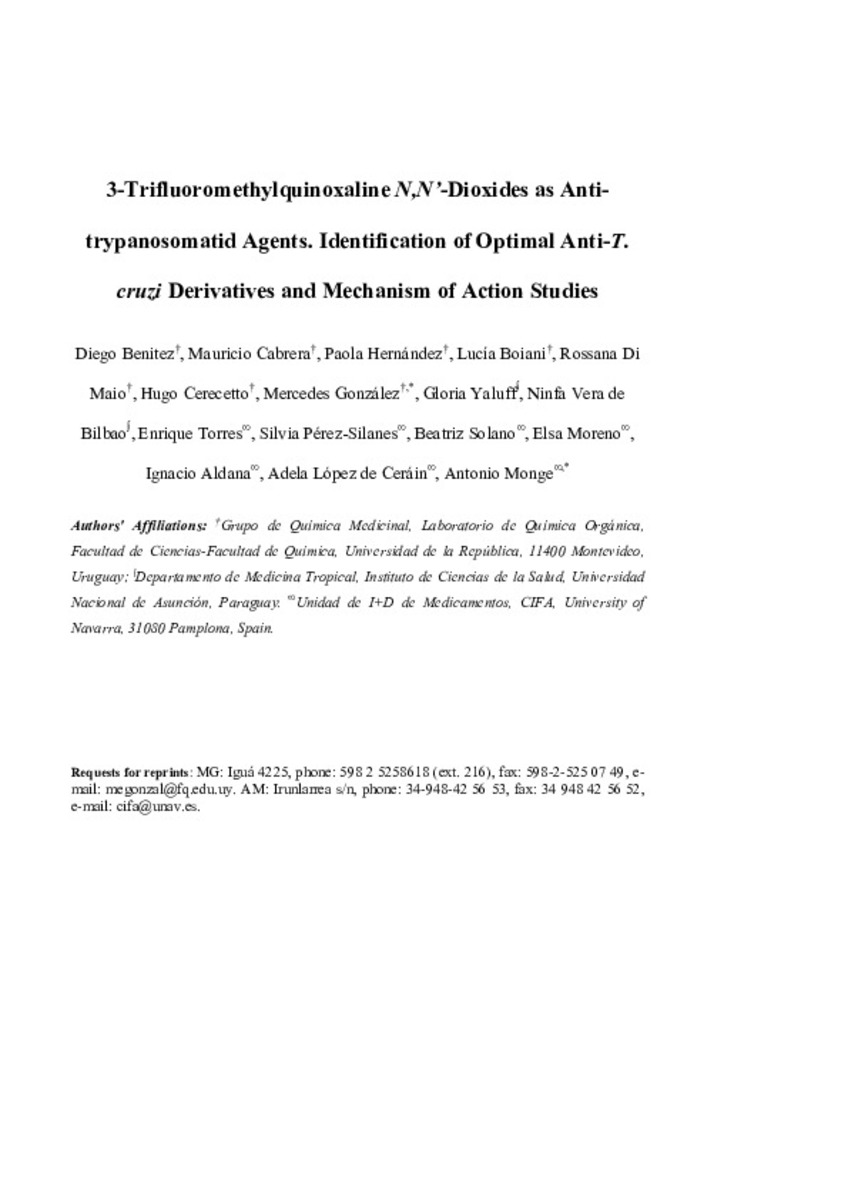3-Trifluoromethylquinoxaline N,N’-Dioxides as Anti-trypanosomatid Agents. Identification of Optimal Anti-T. cruzi Derivatives and Mechanism of Action Studies
Palabras clave :
Quinoxaline N,N´-Dioxide
T. cruzi
Leishmania
Fecha de publicación :
2011
Editorial :
American Chemical Society
Cita:
Benitez D, Cabrera M, Hernandez P, Boiani L, Lavaggi ML, Di Maio R, et al. 3-Trifluoromethylquinoxaline N,N'-Dioxides as Anti-Trypanosomatid Agents. Identification of Optimal Anti-T. cruzi Agents and Mechanism of Action Studies. J Med Chem 2011 May 26;54(10):3624-3636.
Aparece en las colecciones:
Estadísticas e impacto
0 citas en

0 citas en

Los ítems de Dadun están protegidos por copyright, con todos los derechos reservados, a menos que se indique lo contrario.









